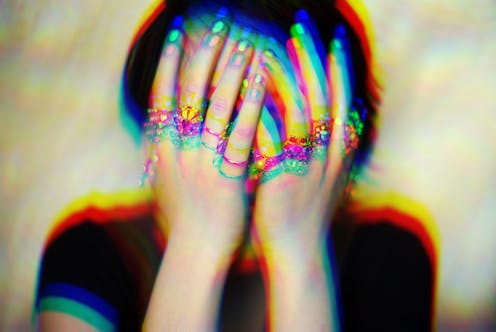
There is a delirious moment in the 1988 documentary Cane Toads: An Unnatural History when a back-lit hippie explains that consuming mescaline allowed Native Americans to see the world through the eyes of the cactus. It is the same when people imbibe the skin secretions of the toad, he mumbles, although sadly he “didn’t like it that much”.
Whether seeing the world through the eyes of a toad is an experience worth having is an open question. But the ingenuity required to discover that the residue of a boiled toad is hallucinogenic and the bravery required to drink the fetid broth reveal the powerful human appetite for mind expansion.
Toad juice (or bufotenine, its active ingredient) is currently experiencing a renaissance, albeit usually in smokable form. Mike Tyson, Hunter Biden and Joe Rogan credit it with life-changing insights that years of amphibian-free therapy could not provide. The United States National Park Service recently had to instruct visitors not to lick the Sonoran Desert toad in search of similar epiphanies. Consumption can be fatal, as tragic deaths in Australia from a different frog toxin have shown.
Review: Psychonauts: Drugs and the Making of the Modern Mind – Mike Jay (Yale University Press)
Psychedelics are back in the news. Around the world, research on their therapeutic uses is accelerating and popular interest and consumption are growing. Psilocybin and MDMA (ecstasy) have recently been approved in Australia as adjuncts to therapy for treatment-resistant depression and post-traumatic stress disorder. The swiftness of the decision has surprised many advocates of psychedelic treatment.
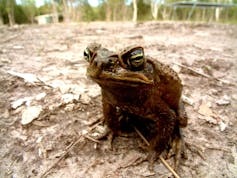
This development has triggered a predictable combination of hype and dread. Some see a coming therapeutic revolution that could break through the stubbornly high rate of non-response to standard mental health treatments. Others see a dangerous fad that runs well ahead of the scientific evidence, and is riddled with zealots, dodgy operators and regulatory challenges.
Mike Jay’s superb Psychonauts: Drugs and the Making of the Modern Mind investigates how we got to this point and why our ambivalent fascination with mind-altering substances endures.
By his account, psychonauts are explorers of inner space who seek new forms of consciousness, mystical experiences, unknown pleasures, or, sometimes, commercial opportunities. Just as astronauts ride rockets to the stars, psychonauts experiment with their brains to enter unexplored psychic territory: per aspera ad anima.
Read more: Do psychedelics really work to treat depression and PTSD? Here's what the evidence says
The early psychonauts
In a popular but myopic view of Western history, non-medicinal drug-taking is a relatively recent phenomenon that reached its zenith in the 1960s counterculture. Caffeine, nicotine and alcohol are overlooked. Jay excavates a much deeper and more interesting history of early chemical adventurers.
In the 1880s, for example, Sigmund Freud self-administered cocaine to test whether it could induce euphoria and recharge the cerebral battery as earlier psychonauts had suggested. One had reported visions of “a golden tortoise seated on a throne of soap”.
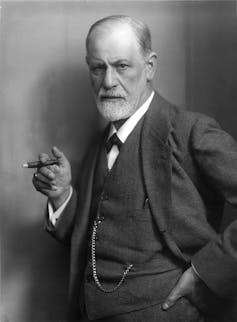
Persuaded by his positive experiences, Freud wrote influential papers, endorsed cocaine manufacturers, and recommended their product to a colleague as a treatment for opiate dependency. Freud was not alone in underestimating how addictive the substance could be. Chastened by his colleague’s descent into a vortex of abuse, he set cocaine aside and airbrushed it from his life story.
The tale of nitrous oxide is less cautionary. Jay recounts how the psychologist William James felt transformed both personally and professionally by his experiments with the gas, inhaled from green silk bags rather than the cream-whipping bulbs of today.
To James, nitrous oxide revealed the complexities of consciousness by dissolving familiar categories and providing access to mystical experiences behind the veil of ordinary awareness. This perspective resonated with the literary modernism of the day and informed his famous writings on religious experiences.
Cannabis presents Jay with another extended historical case study, this time dominated by literary and artistic pioneers. In mid-19th century France, consumption of hashish became associated with sensuality and a bohemian fascination with the Arab world. A similar exoticism persisted when hashish was introduced to the United States, where it became a common ingredient in elixirs and was promoted as a source of spiritual epiphanies by “sex magician” Paschal Beverly Randolph.
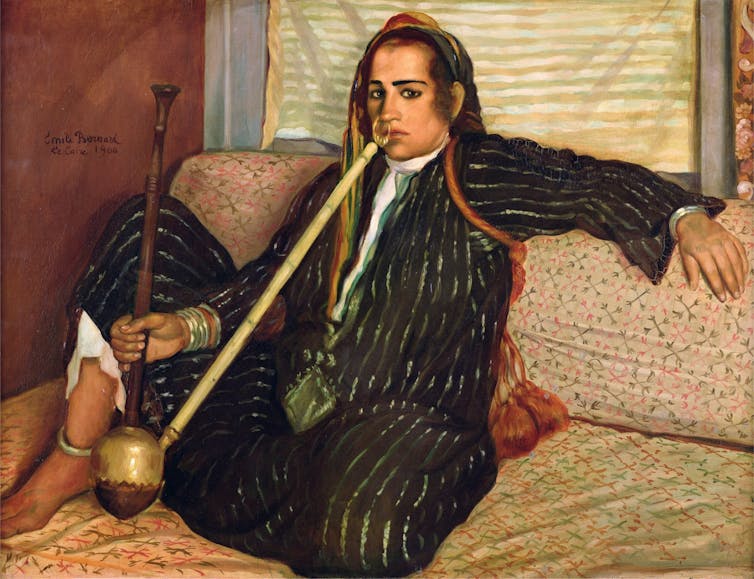
Read more: Friday essay: peyotes in suburbia – the secret world of Sydney's psychoactive cacti growers
Substances and society
Much of Jay’s book lays out an absorbing history of psychoactive substances, but it is also rich with insights on the broader societal implications of substance use.
Jay recounts how the meaning of “drug” has been altered and contested over the past century. Once an expansive category, it contracted when “medications” escaped into therapeutic legitimacy, leaving the remaining substances stigmatised and criminalised.
More recently, psychedelics have attempted the same manoeuvre, trying to shed the taint of abused drugs to become seen as morally impeccable. The claim that they are consumed for the higher purposes of self-exploration or therapy, rather than the grubby ones of addiction or hedonism, has underpinned that attempt.
Jay pointedly argues that this distinction has been overlaid by a racial hierarchy. Psychedelics have been stereotypically whiter than the substances against which the American war on drugs has primarily been fought, disproportionately targeting minority communities as a result.
The varied explanatory frames placed around substance use are equally intriguing. In 1884, the physician Norman Kerr asked whether “inebriety is a sin, a crime, a vice or a disease”.
Jay demonstrates how, beginning in the early 20th century, moralising and pathologising both became more prominent. Addiction came to be seen as socially corrosive, resulting in harsh criminal penalties for possession. A widespread belief arose that drug use revealed a lack of self-restraint found in people of “lower” classes and races.
Concurrently, the study of substance use became more focused on disease and pathology. Abstinence came to be equated with health. The temperance movement and Prohibition combined these images of drug use as blameworthy and unhealthy.
Jay acknowledges that substance use can be health-damaging, but rejects the view that it is intrinsically pathological. He also rejects the argument that psychedelic experiences mimic psychosis. Consumers are typically aware that their altered perceptions are chemically induced, rather than experiencing a break with reality. For this reason, “hallucinogen” is a misnomer: drug experiences are not psychotic hallucinations.
Read more: The real promise of LSD, MDMA and mushrooms for medical science
Psychonautics and psychology

As its subtitle indicates, Psychonauts is not just a story of the pioneers of chemical self-experimentation, but an account of their influence on psychological modernity. Jay identifies some intriguing connections between the psychonauts’ explorations in mind expansion and wider trends in the mind sciences.
Many early psychonauts were artists, writers and philosophers, but influential psychologists and neurologists were also well represented, notably Freud, James and, decades later, Harvard psychology professor Timothy Leary, a buttoned-down academic researcher before he turned on, tuned in and dropped out.
These three writers all found inspiration in their experiences of intoxication, although Freud backed away from his own. Their explorations were supported by approaches to psychology that centred the study of subjectivity. How better for researchers to study experience than to subject themselves to it?
William James worked at a time when subjective experience was central to the nascent field of academic psychology. Introspection was the methodology of choice, used by Edward Titchener to identify at least 44,435 conscious elements that could be blended or combined into perceptions and ideas.

This attempt to formulate an introspective science of consciousness was later superseded by a laboratory science of brass instruments and observable behaviour. But until that time James could carry out his investigations of nitrous oxide and mystical experiences without challenging psychology’s zeitgeist.
As the pendulum swung towards behaviourism in the first half of the 20th century, psychologists’ attention shifted away from awareness and towards what people – or more often rodents and pigeons – did rather than felt.
This period roughly coincides with the Progressive Era in the United States, when drug use was redefined from personal choice to social problem, resulting in greater regulation of controlled substances and punishment of those who refused to be regulated. New psychoactive substances – such as amphetamines, ecstasy and LSD – were synthesised during this period, but the tradition of self-experimentation had died within psychology.
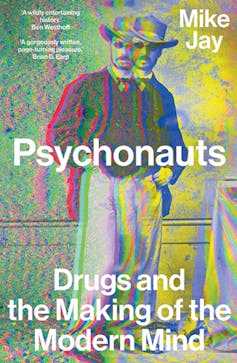
This was all to change in the 1960s, coinciding with a humanistic backlash against behaviourism. It is no accident, Jay argues, that a new generation of psychonauts, such as Leary and his colleague Richard Alpert, rose at a time when psychologists were exploring the complexity of human needs beyond fundamental biological drives.
Abraham Maslow’s well-known pyramid of needs, capped by the need for self-actualisation, recognised that people aspire to peak experiences of self-transcendence when their basic physiological requirements or “deficit needs” have been met. The search for ingestible nirvana became a well trodden path to that end.
Jay’s sympathies clearly lie with the psychonauts and against the forces of repression and moralism. Although he acknowledges their naivety and pierces some of their pretensions, he sees their quest as a noble one. They were seeking genuine discovery rather than artificial paradise. Present day psychonauts can trace their lineage to a group of bold and passionate explorers.
Jay is not starry-eyed about the significant costs of addiction and abuse, but reminds the reader of the equally profound toll of an unwinnable war against drugs. He reminds us that psychoactive substances deliver not only illicit kicks and therapeutic benefits, but pleasures and insights. His book is a delightful history of the Romantic rebels who first sampled those blessings.
Nick Haslam receives funding from the Australian Research Council.
This article was originally published on The Conversation. Read the original article.







